Design Workshop: Shutters, All Grown Up
Passive design strategies are becoming widely accepted as a way to drastically reduce the amount of energy a home consumes. And while advancements in high-performance building materials and systems have played a prominent role in making our buildings more efficient, low-tech solutions are gaining favor with designers and homeowners.
Shutters are one such low-tech means of passively controlling the environment around a building. Historically, operable shutters served the very necessary functions of controlling light, tempering heat, shielding or welcoming wind, buffering noise and providing privacy. But they are often misused as design elements today. During the postwar U.S. building boom, shutters began to be adopted purely for their historical reference and symbolism. They were too small to cover openings, tacked on or, worse yet, inoperable.
Today, as we strive to make our buildings ever more sustainable, functional shutters are a sensible investment. Like a versatile three-season jacket, they can help make life more comfortable. Here’s how.
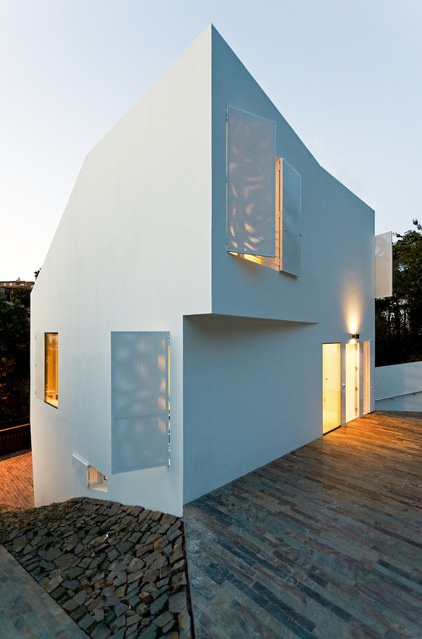
Adaptation to surroundings. One of the primary benefits of functional shutters, whatever their form, is their ability to completely alter the interior and exterior living environment for the inhabitants of a building. The sculptural exterior shell of this home has a pattern of carefully considered openings, each located by the architects to capture (and avoid) specific views to the surrounding site. Spaces that require light during the day require privacy at night in an urban environment, and these shutters adjust to meet these changing needs.
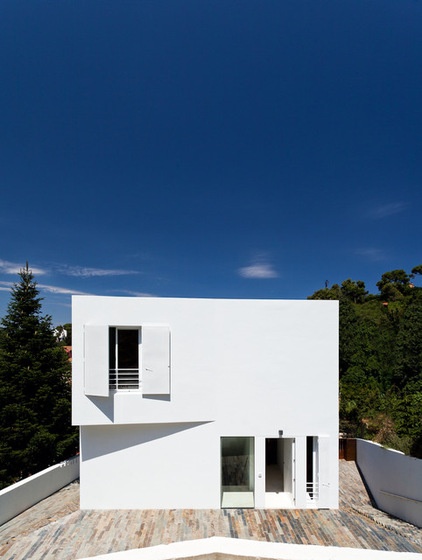
They’re fabricated from perforated aluminum, making them light and airy from the inside but preserving their solidity from the outside. They help to modulate the light and screen views, and their perforated skin admits air even when the shutters are fully closed.
Because our needs and desires change over time, even daily, designing flexibility into our homes preserves both short- and long-term value as well as comfort.
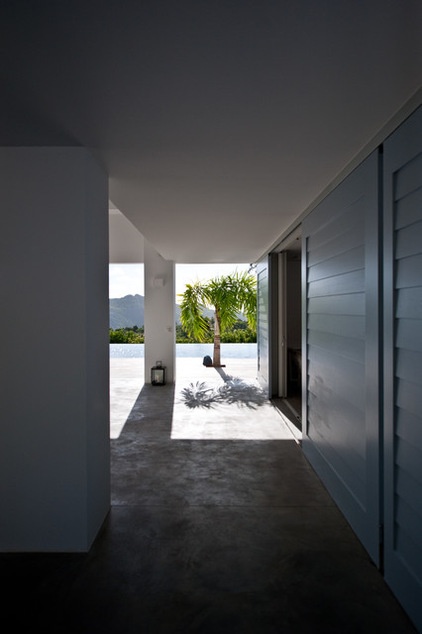
Wind protection. In climates where storms are an ever-present concern, storm shutters serve a vital function. They protect openings from breakage, helping to ensure that the roof remains intact.
This home proves that shutters don’t need to be an eyesore when incorporated fully into the design from the beginning. Many storm shutters appear to be afterthoughts, but here the floor-to-ceiling sliding panels have a permanent place in which to stack when not in use and are designed to be a part of the architecture with a stile and rail pattern and a beveled siding-panel infill.
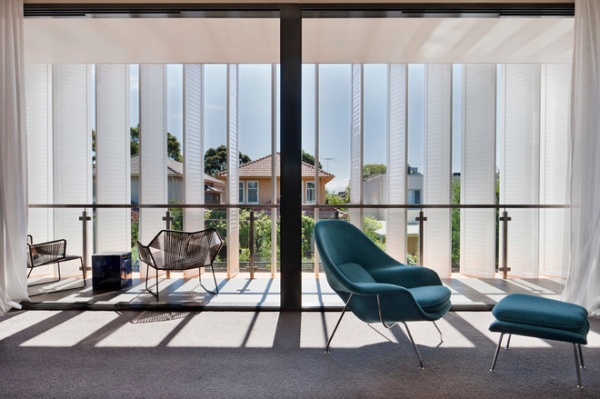
Control views. In this project shutters are used in a completely novel way. They modulate views to neighboring properties and act as well-designed blinders while still permitting the glazed wall to let in daylight. As the sun moves across the facade, the sides of the shutter blades scatter an even, ambient light into the space.
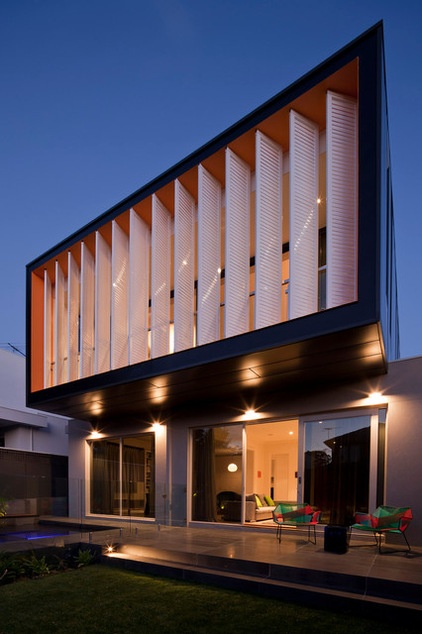
These particular shutters are fixed and positioned to keep the living space private at night; privacy can otherwise be a problem with glazed walls and close neighbors.
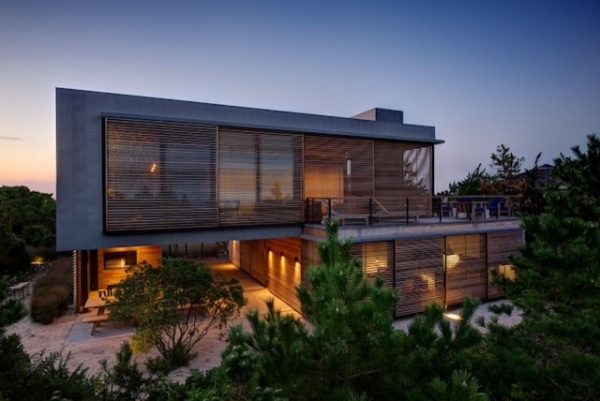
Heat-gain control. When the exterior shell of a building is being designed, one of the primary concerns is controlling the amount of heat gain the structure absorbs from the sun. By locating the shutters on the exterior, one is able to affect just how much solar heat reaches the interior. Keeping solar radiation out in the cooling season and in during the heating season makes for an overall more efficient home that costs less to live in.
The horizontal blades of the shutters can be custom designed to block the higher-angle summer sun and permit the lower-angle winter sun by simply changing the width, spacing or angle of the slats.
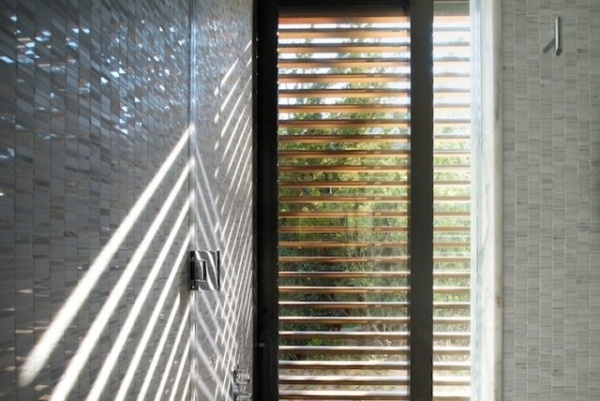
Shutters help to create an exterior buffer on the exterior face — a thin film of air surrounding the home — which increases the exterior envelope’s efficiency and offers a rough surface to buffer winds that can strip heat. This air film actually increases an exterior wall’s overall R-value.
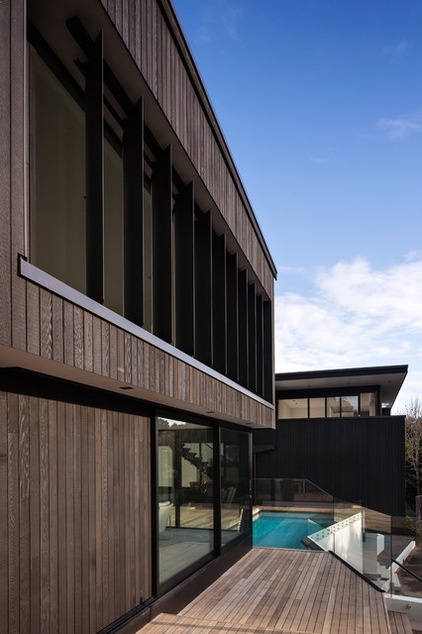
Views that correlate with direct sunlight often create competing design objectives. The view is desirable, as is the light, but the direct solar exposure can quickly overheat interior rooms.
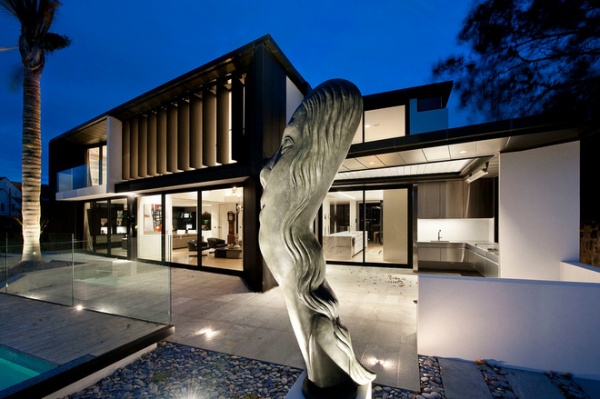
These motorized vertical shutters act as a large plantation shutter, adjusting with the changing light conditions and seasons.
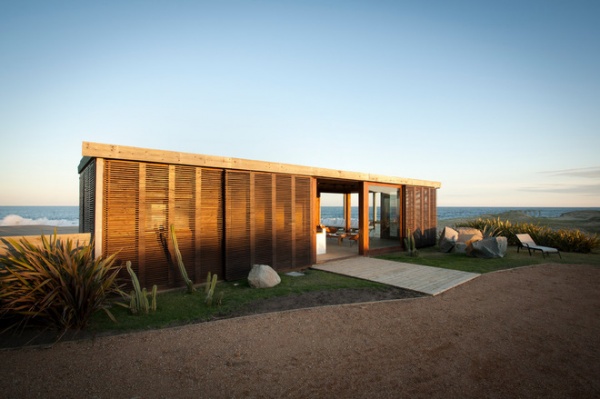
Light control. Layering sliding shutters can produce added protection from wind, light and weather to select exposures. Sliding shutters are particularly useful, moving into or out of the way as necessary. Although the shutter blades are fixed in this example, when overlapped and stacked they combine to produce a stronger filtering effect on the interior than a single shutter alone would have, which can be helpful in an entirely glazed structure such as this.
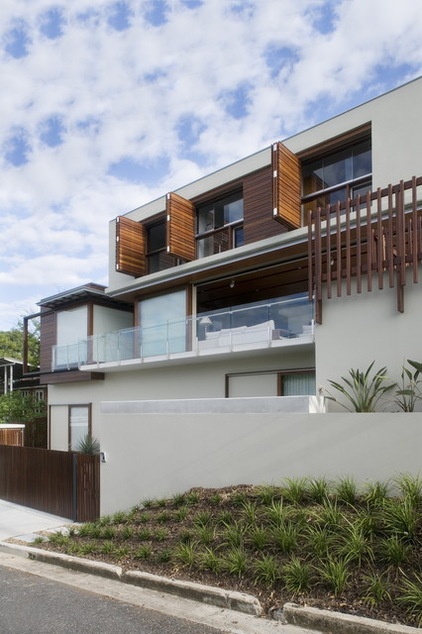
Noise control. Although it’s not a primary function of shutters, many of the older structures in European cities still rely on operable shutters’ noise-reducing capabilities. While solid shutters work best for this, louvered shutters can help to deflect sound too. The louvers can be angled for maximum privacy and still admit light.
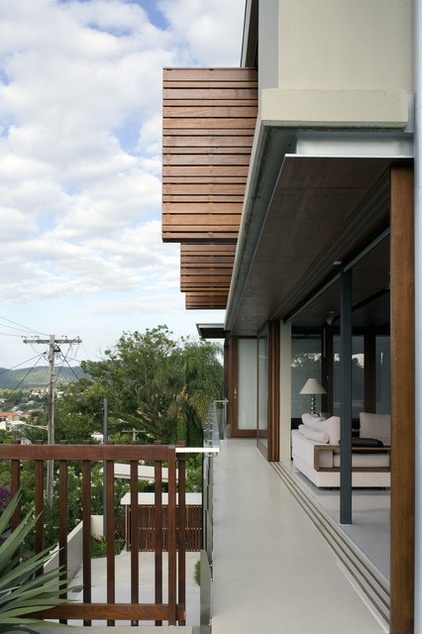
When the same bifold shutters are viewed from below, you can see how they’re capable of completely isolating the private spaces from the urban surroundings. When hinged like this, they can also reflect sunlight back into the spaces while in the open position. They also offer a private, framed view to the city for each bedroom space. This entire project is a study in the use of movable shutters to screen openings in different ways. The exterior walls are so permeable, it’s hard to tell where the inside ends and the outside begins.
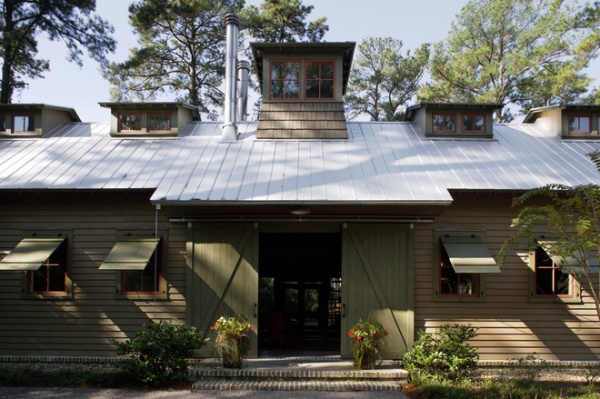
All-purpose weather protection. The Bahama-style shutter used here is characteristically hinged at the top. Frequently used in southern climates, it provides a maximum amount of shade for the spaces in this guesthouse. Many Bahama shutters are louvered, which trades a lower level of storm protection for more light and better views. Depending on the climate, this should be considered carefully. I like how these shutters lend a meaningful, functional aesthetic to the exterior.
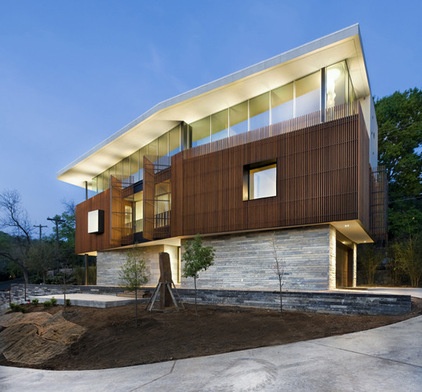
Dramatic effect. A tall ipe screen marks the living spaces of this home. Here one can see the massive integrated pair of 10-foot-wide by 16-foot-high shutters that pivot open to reveal the dining room. Large retractable screens such as this show just how transformative a shutter can be to both an interior and exterior space. (Here it changes an inwardly focused dining space into one immersed in the view.) It also shows that there’s no limit to how far one can go in rethinking traditional notions of what a shutter can be.
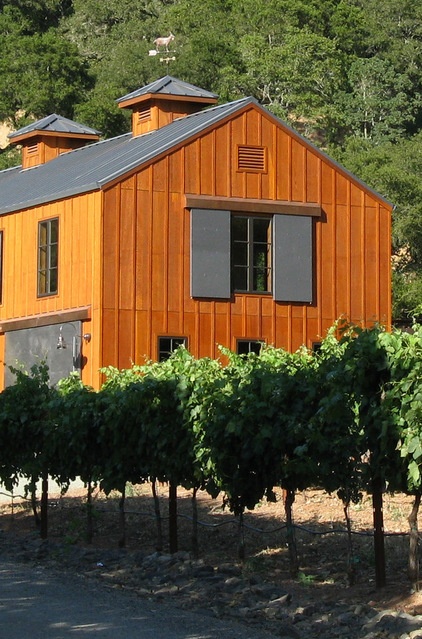
Security. The metal shutters here not only reinforce the barn aesthetic, but offer a way to functionally secure the exterior openings when the building isn’t occupied. This concept can be applied well to vacation homes, where seasonal use imposes security concerns.
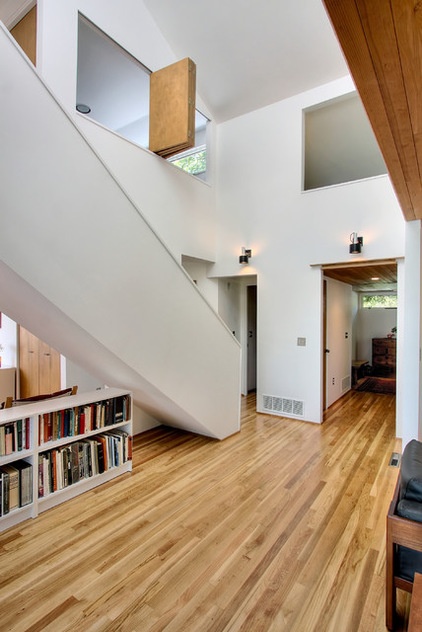
Interior shutters. While we often think of shutters as solely exterior elements, they can be put to use inside as well. These shutters open the bedroom space to the atrium, borrowing light and helping with natural ventilation. They can be closed for privacy at night or can be used to help control energy costs in spaces that may be used only seasonally.
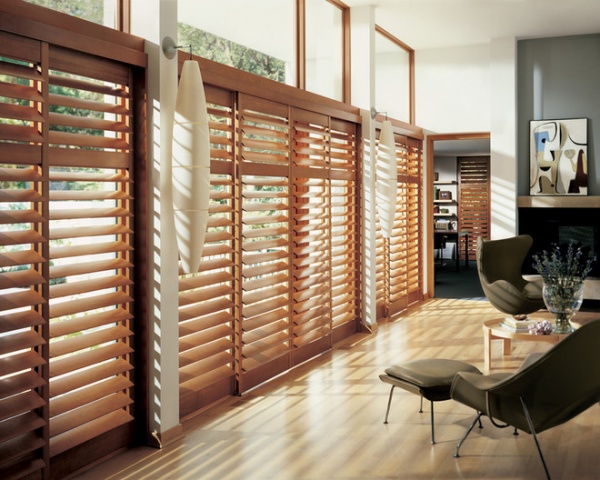
While slightly less effective at controlling heat gain, interior shutters offer an easy way to adjust the amount of light and air entering a space. These plantation shutters have deep, adjustable blades. The deeper the blade, the fewer the overall number of louvers that are required for a given area. These conveniently slide out of the way too. The deep, adjustable blades are also a good choice to bounce sunlight deeper into a space while still maintaining privacy. The lighter the color of the blade, the more enhanced the bounce effect will be.
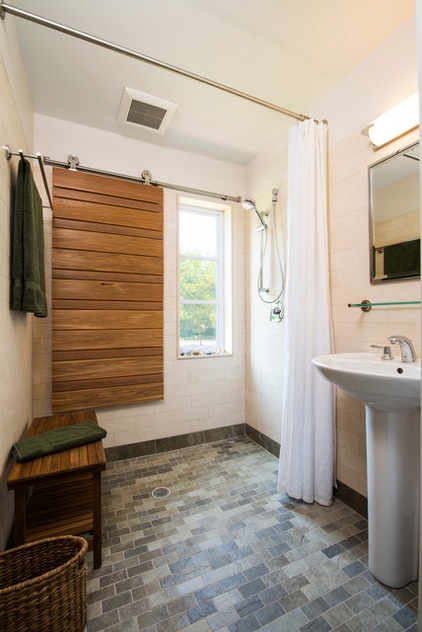
Privacy. The shutter here allows the bathroom to benefit from natural light while preserving privacy when needed. In a wet environment, like this shower, the shutter should be constructed of a durable, rot-resistant hardwood and the track should be stainless steel.
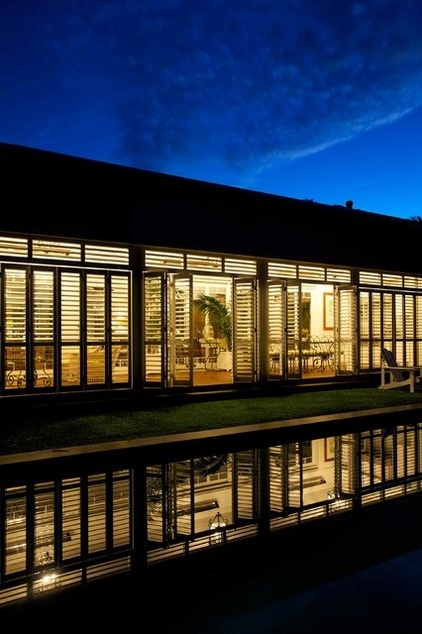
Materials. While shutters were historically fabricated primarily out of wood, material options abound today, limited only by size and functional requirements. These particular shutters were fabricated from lightweight aluminum. It’s important to know the function of the shutter prior to selecting a material. For example, storm (hurricane) shutters have strict code requirements based on region, while a light-controlling shutter material might be chosen for size or color according to a building’s latitude. Function will in large part determine material selection.
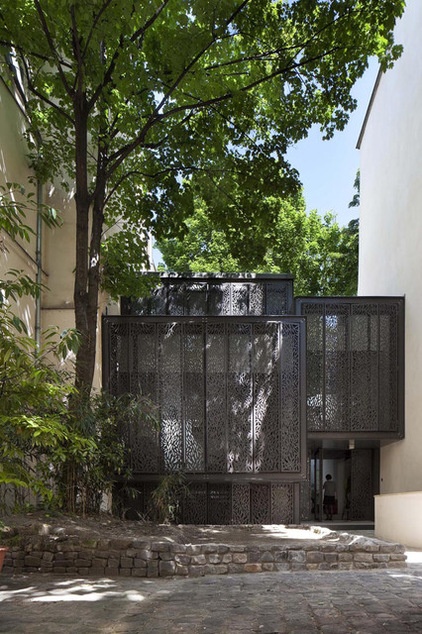
Metal shutters can be elaborately filigreed to deliver patterned, dappled light to the interior.
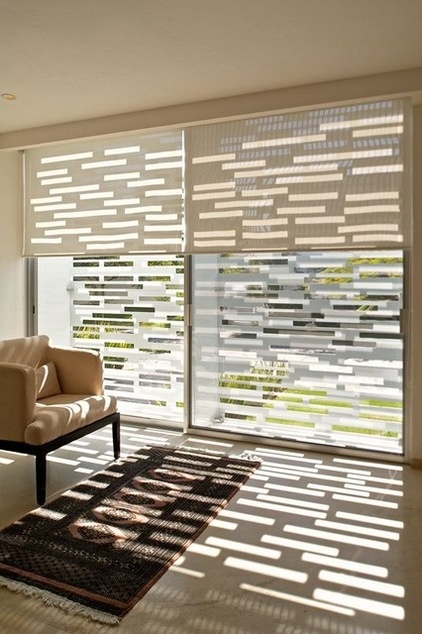
Or they can be aligned with a broader geometrical design idea at work in the architecture.
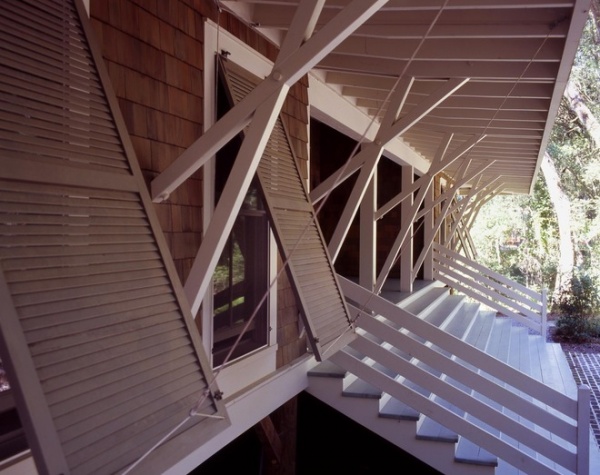
If wood is desired, select a rot-resistant species such as cedar, teak or mahogany and leave it unfinished so it’ll weather to a silvery gray. Clear-finished and painted shutters will require the most maintenance, followed by the slightly lower-maintenance stained option.
Metal and fabric are also popular choices for exterior shutters, because they carefully balance weight, low maintenance and durability.
More: 9 Ways to Open a House to the Outdoors












